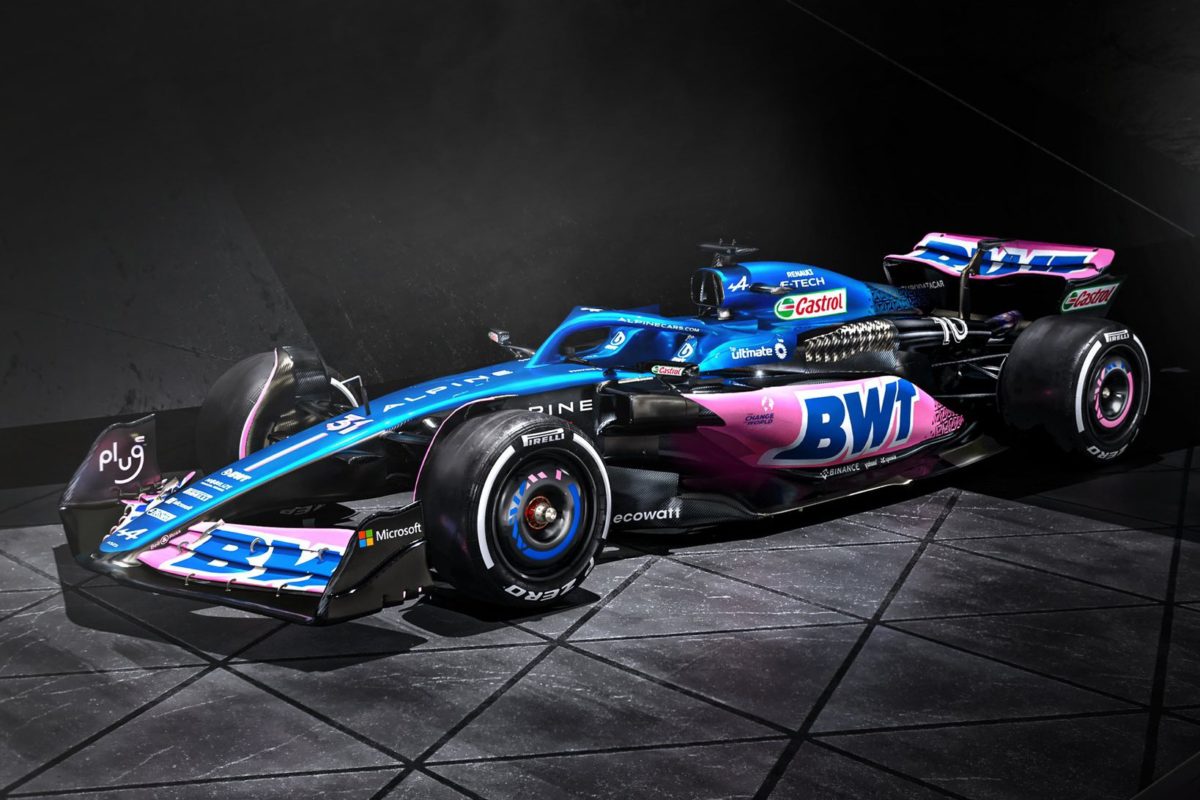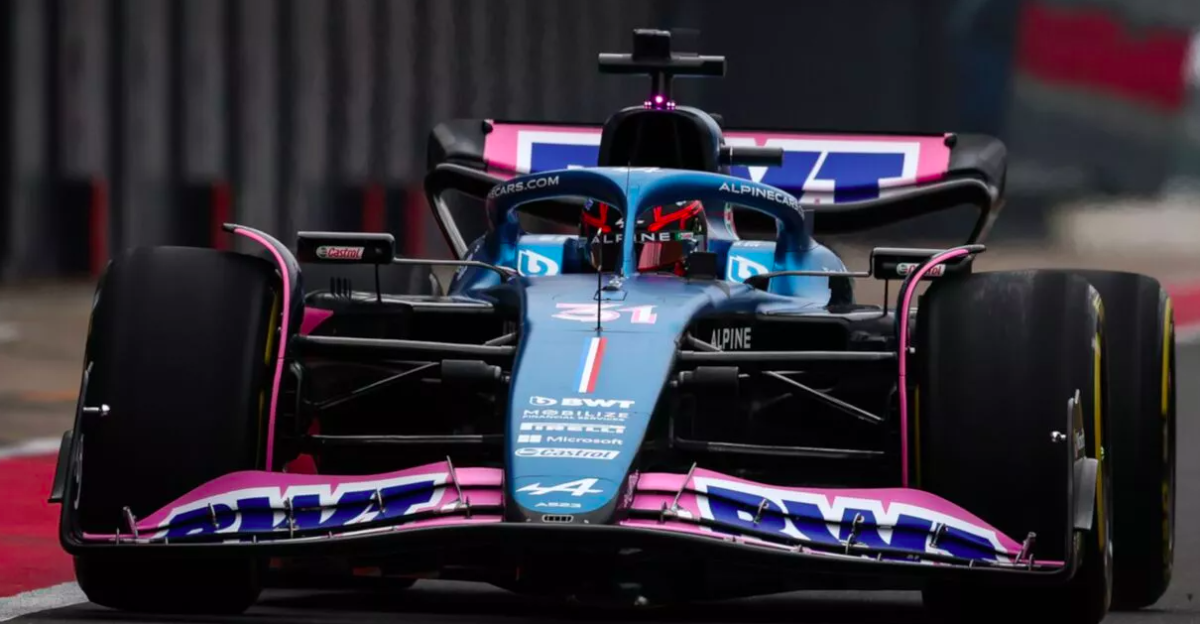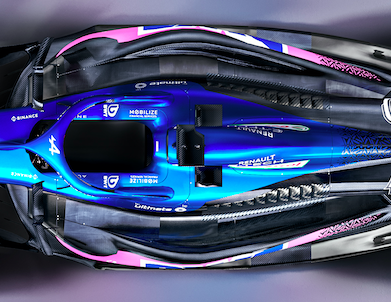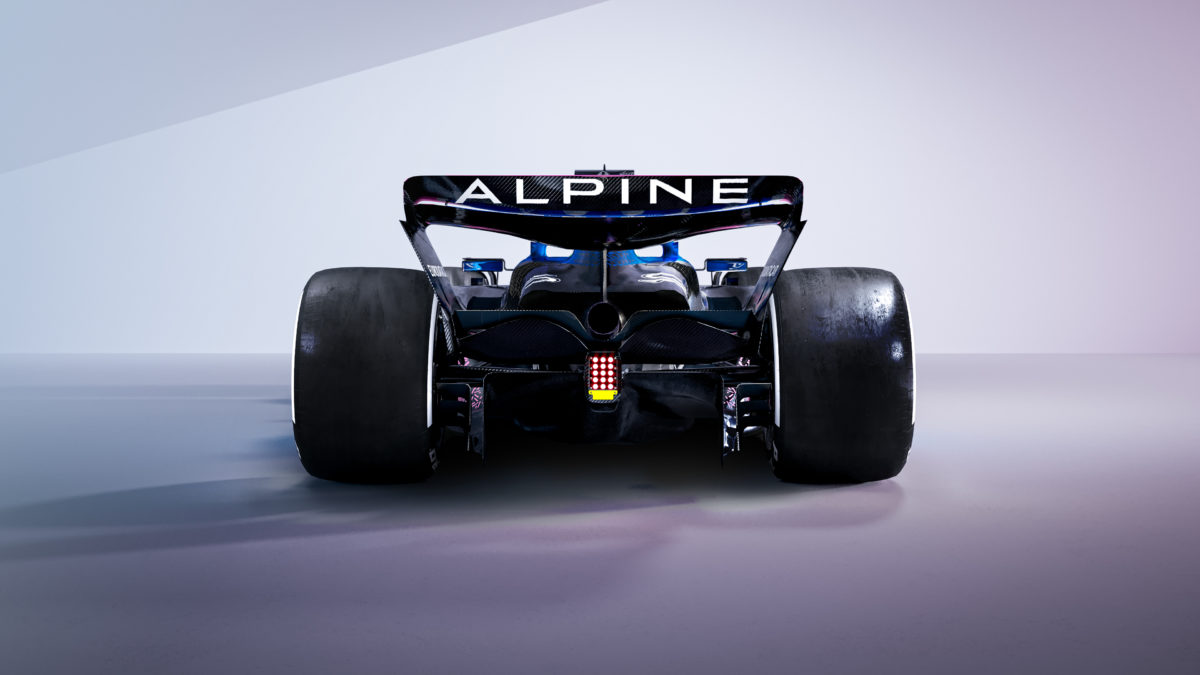
Alpine technical director Matt Harman has conceded the team set itself “aggressive targets” when it came to the design of its 2023 F1 car.
It led to the rollout of the A523 in London and the team declaring its intent to challenge the big three of Red Bull, Ferrari and Mercedes on a more consistent basis.
Although Alpine finished fourth in the constructors’ championship last year, the gulf to third-placed Mercedes was a cavernous 342 points.
Whilst Alpine is not expecting to close such a yawning gap in one season, it is hoping to at least reel in the leading trio.
To that extent, the A523 has been a challenge for Harman and his team, resulting in a car that will be healthily below the 798kg weight limit for this year, a target many of Alpine’s rivals have again struggled with.
Alpine change front-wing structure

In a rare overview from a technical director, Harman has explained the front-to-back design philosophy of its latest challenger, and the changes that have been made.“We looked quite extensively at changing the nose concept, and there’s a very different structure which gives us more freedom to change more elements of the front wing more quickly, and allow us to control that airflow more consistently into the front suspension area,” said Harman.
“As we move a little bit further back, the front suspension is exactly the same as the A522, but it’s not the same in terms of its kinematics and the way it works.
“We’ve changed the position of our wishbones quite considerably, again, to help with that pressure of the flow through that area to make sure we present that air to the front of the floor in the right attitude, and to balance the amount of airflow that’s going both over the top of the floor and into the diffuser itself into the front fences.
“We’re always controlling that distribution of mass flow between what goes to the rear of the car and what gets out washed outside.With regard to main part of the chassis, the sidepods and the floor edges, Harman added: “This is going to be quite a big hunting ground for us through the season as we look to continue with that very aggressive development pace of the car.
“We developed this quite considerably last year, and this year, we’ll do the same again.
“There is a quite a deep gully that we try and run that mass flow of air to the back of the car improving the energy at the rear, which is where a lot of our load is placed.
“You will also see a great deal of development on the edge of the floor. This is again quite important to us as we develop the floor, and we try and control some of those structures there.”
Alpine continue aggressive rework in PU area

Alpine’s power unit caused considerable issues last season, resulting in a number of retirements, notably on Fernando Alonso’s side of the garage, sparking a move to Aston Martin.
Referring to the work beneath this part of the chassis, Harman said: “We looked at changing some of the aerodynamic affecting components.
“So the heat rejection system, for example, the cooling system as it might be more commonly known, we’ve taken some of that we’ve normally had on the centerline, and we’ve reduced it to try and control some of this mass flow going to the rear of the car.
“Normally, we would just take that amount of face area to put it in the side pod but the team has worked really aggressively in improving the efficiency of that system, which we’ve made smaller.
“We’ve also managed to reduce the plenum temperature for the engine as well, which again gives us not only an aerodynamic benefit, but more crank power.”
For this season, to combat the porpoising which was a thorn in the side’s of most teams last season following the introduction of new aerodynamic regulations, the FIA has ordered the floor egde of the cars be raised by 15mm.
“That loses us some load on the rear,” revealed Harman. “But we gained that back quite quickly.
“Our aerodynamics department was very good and effective at gaining that back and now we’ve accelerated through that.”
Alpine boasts weight-reduced rear

The most dramatic change for the A523, however, has been with the rear of the car and its suspension.
“We’ve changed concepts in that we’ve gone from a pull-rod rear suspension to a push rod for quite a few different reasons,” said Harman.
“Firstly, we needed to take some weight out of our car, and we did have a very interesting concept for last year but this one is more interesting. It’s little bit simpler with the push rod and has allowed us to take an awful lot of weight out of the rear of the car.
“Also, we’ve put a little bit more complexity into the inboard system such that we’ve got more modularity for our trackside engineering teams. We needed to give them tools to better set up the mechanical balance of the car, and that’s what they have.
“But most importantly, we’ve controlled the airflow through here. It’s much cleaner, there’s less blockage so that we can get more air out through the rear of the car. That’s really, really important, and it’s going to be a good development for us as we move forward.
“Lastly, but no means least, we get to the rear wing, and the rear wing is something that we have a few of for the year as we go through different races, but it’s all about efficiency.
“So we’re trying to make sure that we have a similar or more load at the rear wing, but a much greater efficiency, so less drag.
“The way we do that is by optimising the beam wing, which is the lower section of the rear wing which allows us to make sure that we’ve got the lowest drag in the car.”
The key for Alpine is the reduction of weight all over the car, which could prove crucial in preparation for grands prix in comparison to those teams which have struggled to make the weight.
“We’ve had a very aggressive weight reduction programme,” confirmed Harman.
“It’s really pleasing to be able to say that the car will be underweight this year and we will have ballast in the car.
“It means we will be moving that around to optimise that weight distribution, which again is a fantastic performance tool for us and our trackside engineering teams.”





















Discussion about this post